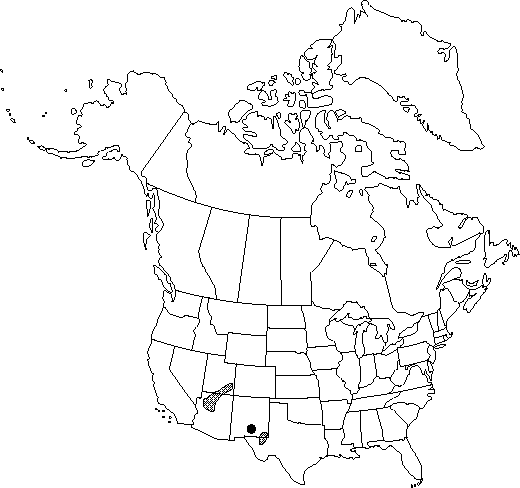Ostrya knowltonii
Gard. & Forest 7: 114. 1894.
Trees, to 9 m; crowns open, narrowly rounded. Bark brownish gray, broken into narrow vertical scales or rather ragged strips. Twigs sparsely to moderately pubescent, often with stipitate glands. Leaves: petiole covered with stipitate glands. Leaf blade ovate or broadly ovate-elliptic to broadly elliptic or nearly orbiculate, 2.5–6.5 × 1.5–5 cm, base narrowly rounded to cordate or cuneate, margins sharply and unevenly doubly serrate, apex acute; surfaces abaxially pubescent, especially on veins. Inflorescences: staminate catkins 2–3 cm; pistillate catkins 0.6–1 cm. Infructescences 2.5–4 × 1.8–2.5 cm; bracts 1–1.8 × 0.5–1 cm.
Phenology: Flowering late spring.
Habitat: Streamsides and rocky slopes in moist canyons
Elevation: 1200–2400 m
Distribution

Ariz., N.Mex., Tex., Utah.
Discussion
Ostrya knowltonii occurs sporadically throughout the arid Southwest, including both rims of the Grand Canyon. On the basis of morphology and phytogeography, it appears to be more closely allied with Ostrya in mountainous western Mexico than with the eastern O. virginiana.
Selected References
None.